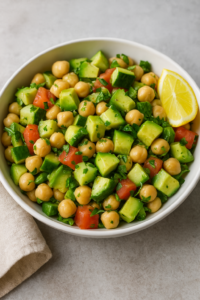
Type 2 diabetes and obesity are associated with kidney disease, and abdominal fat is more strongly associated with Type 2 diabetes than is fat under the skin. According to research, the results of which were published in the journal Nephrology, Dialysis, and Transplantation in October 2010, abdominal fat is also the kind more strongly associated with poor kidney function when compared with fat lying under the skin.
Nine hundred and twenty-nine people with Type 2 diabetes were included in the study. Computerized tomography was used to make images of their body fat. The glomerular filtration rate, a measure of how much work the kidneys accomplish, was compared with the amounts of fat in the abdomen and under the skin. It was found that the lowest amounts of kidney work were associated with the highest amounts of abdominal fat. Fat under the skin was not associated with the amount of work performed by the kidneys. It was therefore concluded that abdominal fat might be a risk factor for kidney failure in overweight or obese people with Type 2 diabetes.
Check out these related articles, too:
What Is Diabetic Gastroparesis?
Healthy Lifestyle Tips For Type 2 Diabetes
Does protein increase blood glucose levels?
How Does Diabetes Affect My Teeth and Gums?
What is the best way to manage diabetes?
Abdominal fat is not just what is seen around the waistline. Fat inside the abdomen, visceral fat, manufactures chemicals that prevent other cells from responding to insulin as they should. These chemicals also trigger inflammation, one of the body's ways of responding to injury... which is good when you cut your finger but not where Type 2 diabetes is concerned. Subcutaneous fat does not seem to cause insulin resistance, but abdominal fat brings about hormonal changes in the body and cause insulin resistance, the hallmark of Type 2 diabetes.
How hormonal changes might promote kidney disease remains to be seen, but losing the belly fat is clearly desirable.
Exercise can make a big dent in abdominal far, or visceral fat... it just means you must work a little harder at eating right and burning calories. A regular program of moderate-intensity exercise is a good way to burn belly fat. Muscle strengthening exercises increase the metabolic rate while the muscles use the broken-down fat for energy. Walking and lifting weights are good ways of getting the muscles working.
Limiting calories by eating low-calorie, high-fiber foods is also helpful in reducing belly fat, which is often the first kind of fat to lose when you start to lose weight. Fruits and vegetables are typically the kind of food highest in fiber and lowest in calories. Lower you blood sugar levels and you will lose weight, lose weight and your blood sugar levels will fall.
Reducing your abdominal or belly fat through diet and exercise is the best way to improve insulin resistance, but certain medications may be of value, especially with pre-diabetes. Do not hesitate to discuss with your doctor the benefit of medications in the early days of your recovery from high blood sugar levels.
10 Simple Food Concepts Every Person Living With Diabetes Should Know
Making Cheesecake For Diabetics
Enjoy the Taste and Benefits of Diabetic Foods
Will The Mulberry Leaf Help Your Diabetes?
Why not click on this link to claim your Free E-Book Answers to Your Questions Many diabetics have found the information useful... it has been put together from the many questions Type 2 diabetics put to me.
When you click this link you will see how you can Beat The Belly Fat Blues Beverleigh Piepers RN... the Diabetes Detective.
Article Source: http://EzineArticles.com/5342373



 Protected by Patchstack
Protected by Patchstack